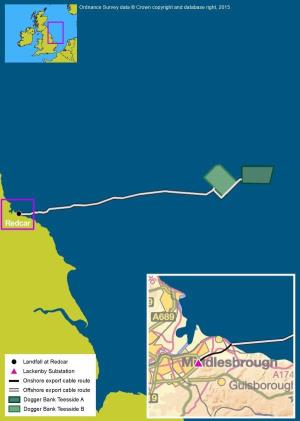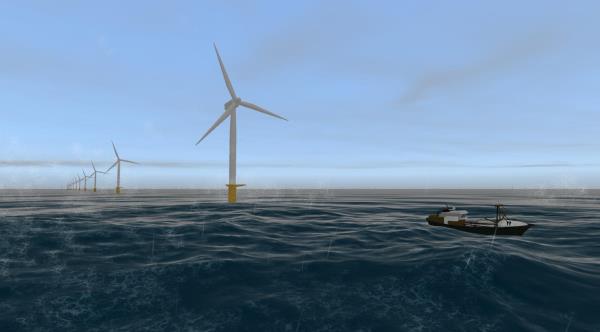A giant offshore windfarm off the coast at Redcar, in the North East of England, has been given planning approval by the government.
The Dogger Bank Teesside A and B scheme would feature 400 turbines with connection made to the National Grid via a 9 kilometre long cable at Lackenby, near Redcar. It will eventually provide eight terrawatt hours of green energy each year (enough power for up to two million homes*).
The scheme is the second from the Forewind ![]() consortium - made up of four international energy companies - RWE, SSE, Statkraft and Statoil - to get the green light. Plans to develop Dogger Bank Creyke Beck
consortium - made up of four international energy companies - RWE, SSE, Statkraft and Statoil - to get the green light. Plans to develop Dogger Bank Creyke Beck ![]() , off the Yorkshire Coast, received the go-ahead back in February.
, off the Yorkshire Coast, received the go-ahead back in February.
 The scheme at Teesside is made up of two separate 1.2GW projects of around 200 turbines installed across an area of around 600km2 at a distance of 165 kilometres from the UK coast at the closest point. It is estimated that almost 5,000 jobs will be created as part of the construction phase of the scheme.
The scheme at Teesside is made up of two separate 1.2GW projects of around 200 turbines installed across an area of around 600km2 at a distance of 165 kilometres from the UK coast at the closest point. It is estimated that almost 5,000 jobs will be created as part of the construction phase of the scheme.
Both the consented developments have a proposed installed capacity of 2.4GW making them the equal largest renewable energy applications ever to be approved in the UK, and together the world’s biggest planned offshore wind scheme.
When constructed, Dogger Bank Teesside A&B will be one of UK’s largest power generators, equal to Dogger Bank Creyke Beck and second only to the 3.9GW Drax coal-fired station in North Yorkshire.
The approval follows more than four years of comprehensive assessments, community and stakeholder consultation, and planning by the consortium. This work included the most extensive study of an offshore area ever undertaken by a wind energy developer, with Forewind spending more than £60 million on surveys, the vast majority going to UK-based contractors.

The Teesside A and B schemes, off the coast at Redcar, would include around 400 turbines
Forewind General manager Tarald Gjerde believes the scheme represents a real opportunity for the UK to receive even more of its energy from its abundant wind resource while creating significant economic benefits.
“[The North East, Yorkshire and the Humber] regions are well positioned to take advantage of the many supply chain and employment opportunities, due to both their geographical proximity to the development as well as their industrial and marine heritage, with existing skills in large-scale production activities and a history of offshore support,” he said.
The Crown Estate, manager of the UK seabed, awarded the rights to develop the Dogger Bank Zone to Forewind in early 2010. Huub den Rooijen, Head of Offshore Wind at The Crown Estate, believes the scheme will bring a range of benefits.
“The scale of the Dogger Bank projects offers a significant opportunity to continue to drive down costs, create high value jobs and support the UK’s transition to a low carbon energy supply,” he said.
As part of the consent process, a final six-week legal challenge period is now underway.
References
* Homes powered equivalent: This is calculated using the most recent statistics ![]() from the Department of Energy and Climate Change showing that annual UK average domestic household consumption is 4,192kWh.
from the Department of Energy and Climate Change showing that annual UK average domestic household consumption is 4,192kWh.


